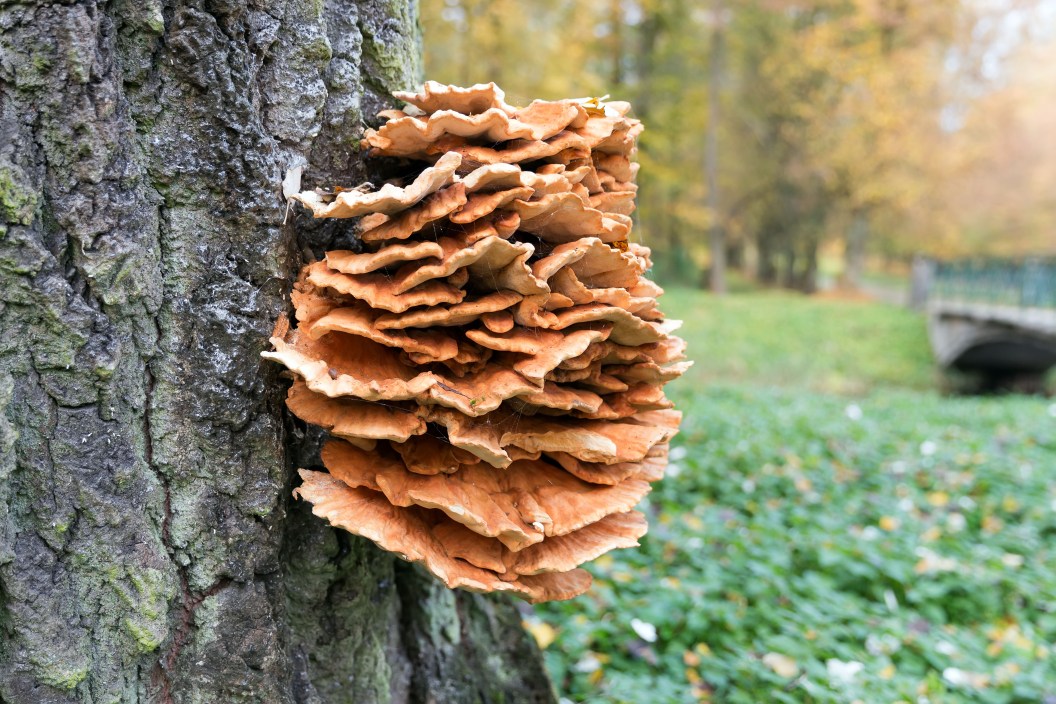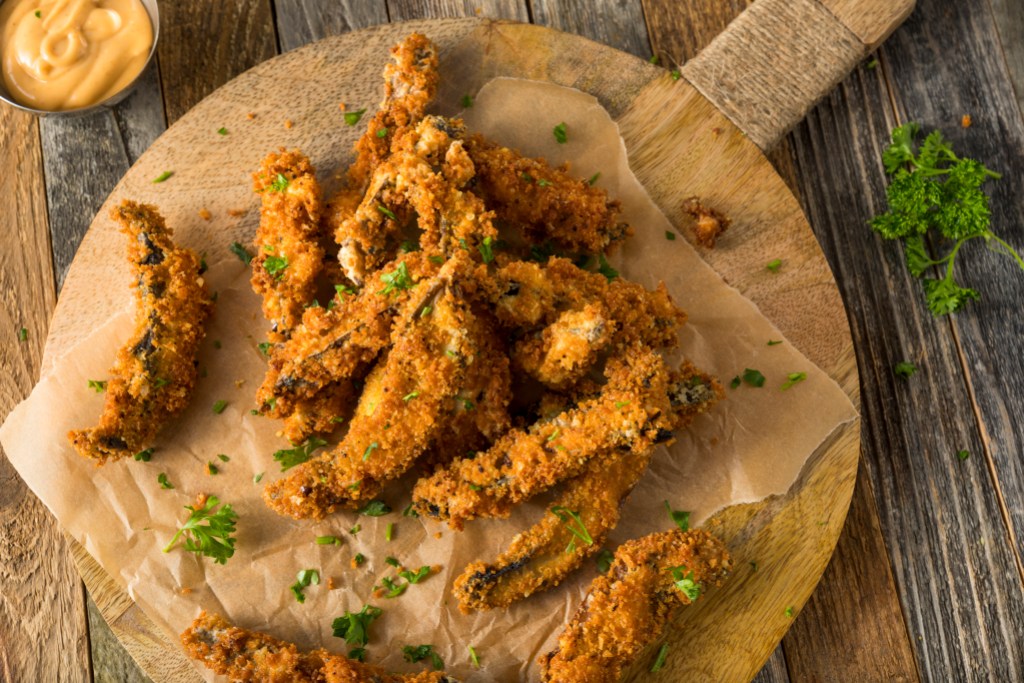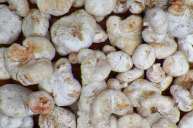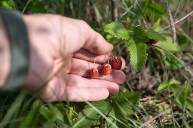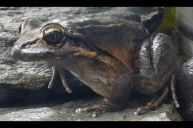What morel mushrooms are to springtime, chicken of the woods are to the late summer and fall months. This crazy-looking (and crazily-named) wild mushroom is versatile, luscious, and easy to prepare
Some people say that chicken of the woods mushrooms have a light meaty texture and flavor that resembles chicken, hence their name. Some recipes even call for these wild mushrooms to serve as a meat substitute. They also serve up great in a stew or risotto.
Considering chicken of the woods is one of our favorite wild fungi to mushroom hunt for, it's great to know all about them that you can.
What Are Chicken of the Woods Mushrooms?
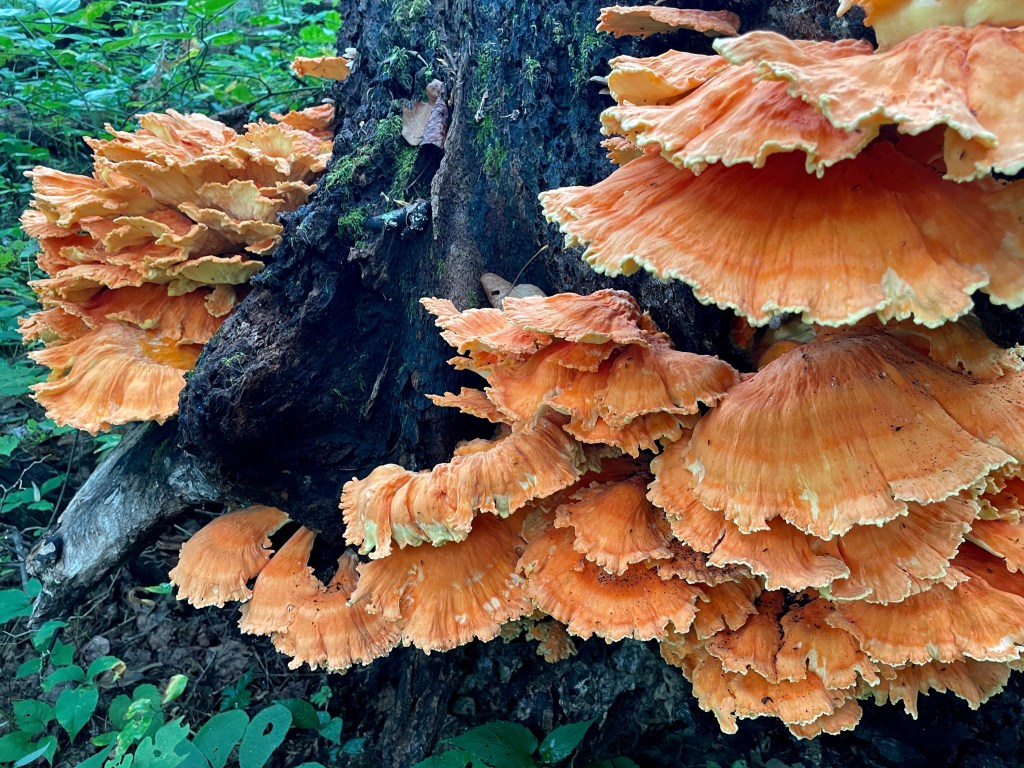
Getty: Douglas Rissing
Chicken of the woods is a mushroom often foraged as a wild food. There are two species of chicken of the woods mushrooms:
- Laetiporus cincinnatus, which has a creamy colored underside
- Laetiporus sulphureus, which has a yellowish appearance and is also known as the "Sulfur Shelf"
There are also several different subspecies. Many mushroom hunters refer to most of these species under the umbrella terms "chicken of the woods," "chicken fungus," or "sulphur shelf."
In technical terms, many of the varieties of chicken of the woods mushrooms are classified by where they are located. For instance:
- Laetiporus gilbertsonii is found mostly in California.
- Laetiporus conifericola seems to be confined mostly to western North America's coastal regions
- Laetiporus sulphureus (or l. sulphureus) is commonly found in eastern parts of the United States and Canada
- In the Great Lakes area, its Laetiporus huroniensis
Mycologists are continually finding new sub species of Laetiporus species throughout the world. Laetiporus ailaoshanensis was discovered in China in 2014 and a Caribbean and Central American variety known as Laetiporus caribensis was discovered to be a unique species in 2012.
How to Identify Chicken of the Woods
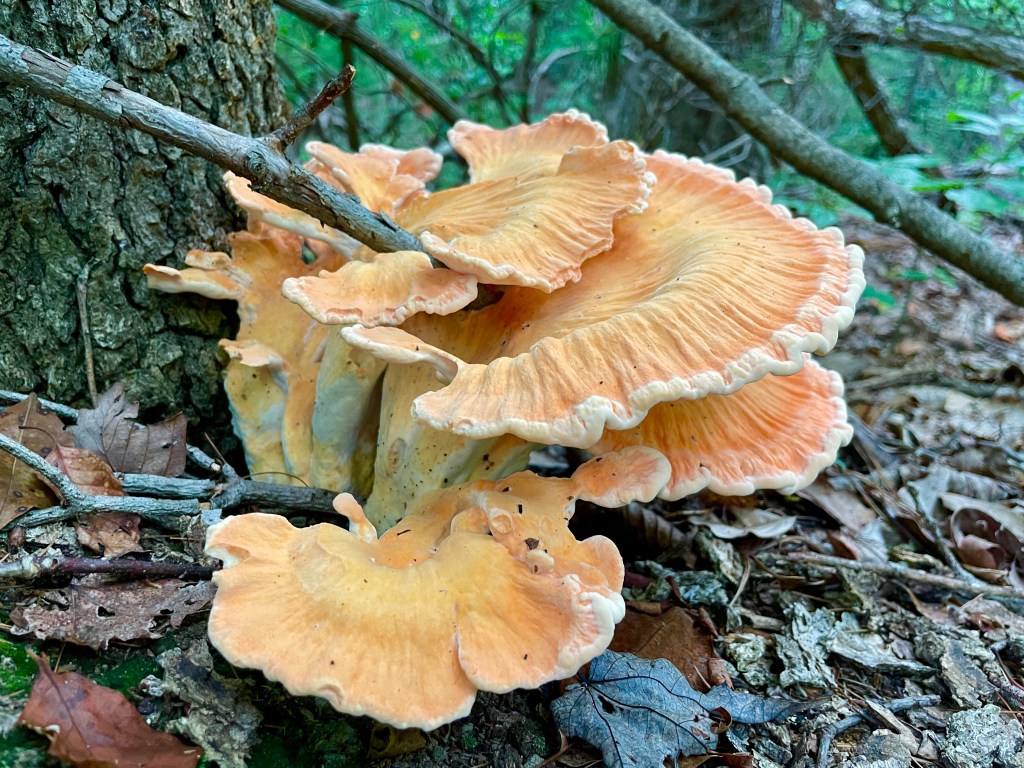
Getty: Douglas Rissing
Chicken of the woods grow as broad, fan-shaped fungi. These edible mushrooms vary in size from two inches to 10 inches in diameter. As they grow, they form multiple overlapping layers that resemble the layered shingles of a roof. The chicken of the woods caps can appear smooth or slightly wrinkled depending on the state of maturity and age. Older specimens will take on a wrinkly look.
As they grow, they commonly change color; chicken of the woods can start out as a bright yellow to bright orange color and fade to a pale shade of cantaloupe or white when they mature.
It is important to know what you are doing when mushroom foraging. Many edible mushrooms have toxic lookalikes.
One way to identify a true chicken of the woods is to examine the underside of the shelf. This wild mushroom is a polypore, so they spread through spores that come out thru small pores or holes on the underside of their caps.
Flip a true chicken of the woods mushroom over and you should see some obvious pores there—not lines or "gills." Lines or gills would indicate a look-alike, not a chicken of the woods.
Fortunately, chicken of the woods is a fairly distinctive mushroom with few lookalikes, and mostly edible ones at that. The closest-looking species of fungi is chanterelle with a similar-looking fruiting body.
Another common mix-up is Grifola frondosa, also known as "hen of the woods." It has similar shelves but is often darker in coloration.
For the most part, you'll find chicken of the woods to be a very safe species of mushroom to look for, especially for first time mushroom hunters.
Where to Forage For Chicken of the Woods

Getty: jotily
The first time you locate chicken of the woods as a forager, you might be surprised at how easy they actually are to find, especially in woodland areas.
The mushrooms are most commonly found on the side of tree trunks, both living trees and dead trees, old stumps, or injured roots.
Many mushroom hunters swear that oak trees are laetiporus Cincinnatus preferred type of wood, but the fungus is often found on a variety of trees from August and into October.
One issue with a chicken of the woods mushroom is the tree it is attached to. Most hunters will not eat a Laetiporus Cincinnatus that was found on conifers like yew or cedar, or uncommon varieties such as eucalyptus. The type of tree the mushroom grows on directly affects the makeup and flavor because the fungus may absorb some oils or sap from the tree, which can make them inedible or at worst, poisonous. To stay safe, ingest only chicken of the woods that have grown on oaks and hardwoods.
When harvesting chicken of the woods, cut the mushroom from the tree cleanly as close to the base as you can, leaving a little bit of the root portion still embedded in the stump, log or tree. Sometimes this mushroom will grow back after being harvested if there is still a viable root portion.
If there isn't time to adventure in the woods looking for mushrooms, the local farmer's market is probably the next best option during the harvesting months.
How to Cook Chicken of the Woods
Transport collected mushrooms in a soft mesh bag, or something that won't crush or bend them. Wash thoroughly before preparing. Chicken of the woods can be stored in a paper bag in the refrigerator for about a week.
One important note before you start preparing chicken of the woods: This edible fungi can sometimes cause allergic reactions, so start with eating only a small amount.
Chicken of the woods can be prepared in a variety of ways, simply by thinking of it as a chicken substitute. The shelf portion has the best texture and flavor. Remove and discard the stem portions.
Fry it up like you'd cook chicken, serve it in a sandwich, chop it up and cook it in to chicken of the woods alfredo. Try a chopped salad topped with grilled chicken of the woods mushrooms. It is also excellent in sautéed side dishes.
